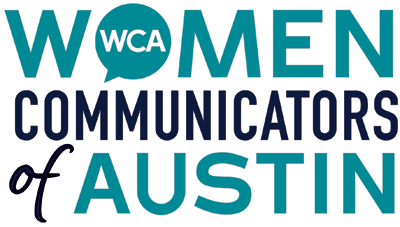I wouldn’t call myself a “networking expert” and I would never pretend to sell myself to  someone as a person who “connects” people. However, a lot of people have told me that I know a lot of people, I’m good at bringing people together and I’ve managed to create a rather large network in the past few years.
someone as a person who “connects” people. However, a lot of people have told me that I know a lot of people, I’m good at bringing people together and I’ve managed to create a rather large network in the past few years.
I (maybe like you) frequently receive emails from people suggesting I have coffee with their job-seeking friends, have clients who appreciate the large network of creatives we can tap, and have recently been asked to co-host multiple parties and events after throwing a rather large housewarming with over 60 fun guests—all who I would consider friends. So, while I might not be Tim Ferriss, I do have something to say about the subject.
If you’re looking to expand your web, but “working the room” seems too overwhelming or is something you’re not comfortable doing, relax! I’ve put together some tips of what to do and what not to do when you’re networking.
Be Patient
One of the biggest turn-offs I’ve encountered at parties or networking events is when someone is pushing their agenda a little too hard. That person might whip out a business card or ask what you do before anything else, and then quickly move on to the next person. I’ve found that the way I’ve expanded my network is by listening to people, being considerate and playing the long game. Sometimes connecting with just one person at a party can open up so many more connections and resources than handing everyone business cards that might just get lost at the bottom of their purses.
Be Reliable
My dad always told me that networking was everything. He got ahead at work not from his connections from work, but from the network he acquired while attending conferences and volunteer events. But one thing my dad never told me that I came to learn over time is that it’s not who you know but who knows you. In other words, you have to make a good impression and you can’t let people down—and that’s something I aspire to do when I network. I never reschedule things at the last minute, unless it’s a serious emergency. Nobody wants to work with or recommend a flakey person.
Be Communicative
If I meet someone and they send me an email, I send them one back—or let them know I’ve received their email and manage their expectations—especially if I’ve been referred to someone by a client or a mutual acquaintance. An attorney once asked if we could meet so he could see how we could help each other. When I asked why he would be the best attorney for my network, he said, “I’m very communicative.” When I went back home later that day and checked his website the link wasn’t working, so I sent him an email about it. I never heard back from him. It’s very easy to burn a bridge, but it’s not as easy to build one.
Be Mindful About Time
I think most meet-and-greet meetings should be treated like job interviews. You should show up with at least a few questions in your head to make the interaction meaningful, especially if you’re looking for advice or guidance, and most of the time you only need 30 to 45 minutes of time.
If someone takes time out of their busy schedule to give me advice, I send them a thank you card. Someone once told me that you can never give someone back their time, which I’ve realized more and more the busier I’ve become. Last year someone asked me to meet for lunch and showed up 40 minutes late. She wanted some advice on how to start her company, but she never apologized for being late or picked up the check, which is what I did the one time I was 30 minutes late for a meeting. In fact, she didn’t even thank me for meeting with her. I haven’t seen her since.
Join Groups that Are Not Networking Groups
I’ve been invited to several meetings for an organization that is “the world’s largest referral network,” but it’s just too aggressive for me. With groups like these, there’s a lot of pressure to make connections and referrals immediately, you usually need to pay to be a part of the group, and you don’t really get to know what people are actually good at.
I prefer meeting people organically by joining a variety of groups I’m interested in, from book clubs to committees. It’s in these groups that I develop deeper, more meaningful connections with people I trust, and simultaneously grow my LinkedIn network. Not all good connections come from professional groups.
When I first moved to Austin, I joined my alumni group thinking that it would help me find a job. It didn’t at the time, but I met several authentic friends from it. Eighteen months later, a woman showed up to the group’s regular football watch, saying she was looking for someone with my exact qualifications to teach a college level class. I didn’t happen to be at that watch, but my friend was and she put in a good word for me, and now I have the job!
Take Notes
I’ve been an avid note-taker ever since I was a child. It’s almost a compulsion of mine to write down recommendations someone gives me, or something to look up later. That information always comes in handy down the road when you want to follow up with a meeting and need some touch points.
Depending on the meeting, taking notes shows that you’re serious about what someone has to say to you. Personally, I find it annoying to spend an hour in a meeting to just follow up with an email that says, “What was it that you told me I should read?” These days I’m usually writing things into the Notes app in my phone, and then I’ll review what I’ve written when I get home.
Ask Questions
If there’s anything I learned from journalism school it’s that people like to be listened to. In my younger years, I used to worry about not being the most interesting or entertaining person in the room, which made quite anxious in large groups. Later, I realized that all I had to do to strike up a conversation was to put on my journalism hat, sit back, listen and ask open-ended questions to the people around me. That’s all it takes to begin a conversation.
Be Bold
There have been a couple of people who I’ve contacted out of the blue via social media and asked to meet up. Sure, there might have been a few awkward minutes of figuring out what to say to this new friend, and maybe that person wasn’t exactly who I thought they were, but more times than not I haven’t regretted meeting these people. It’s best to treat these meetings like blind dates: go somewhere for coffee, so if there’s not chemistry you don’t feel like you have to sit through the entire lunch, waiting uncomfortably. I also take a bold approach to mixing groups of friends.
Be Available
No matter how busy I get, I always schedule time for people. I may not be able to go to every single networking event, meet-up and party—but I’ll selectively carve out four hours out of the week, give or take, to go out. And if I can’t make it to an event, I always RSVP so people don’t think I’m blowing them off. If it’s a meeting, I’ll see if we can squeeze in a call.
The important thing is I represent my business, so I want to make sure I’m top of mind when people are looking for someone with my services. When people meet you in person, they are more likely to do business with you than if they haven’t met you at all. Not every single person I meet turns into a prospective client. That being said, every person I meet might know a prospective client. Also, some of those people might be a good referral for my clients, which is valuable because if I can help my clients then I become invaluable. You never know what you need in your toolkit until they’re already in there.
- The Art of Networking: How to Build Bridges, Not Burn Them - March 25, 2016

